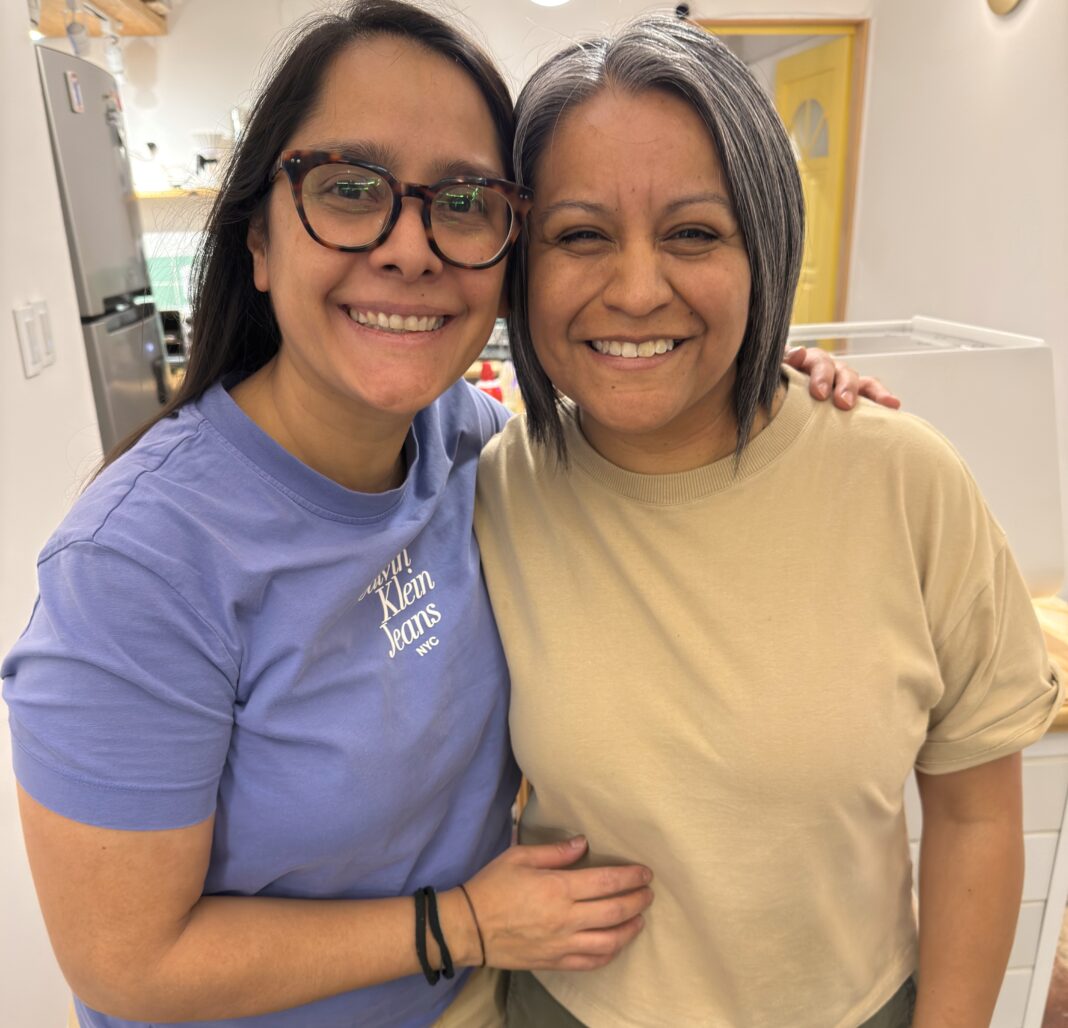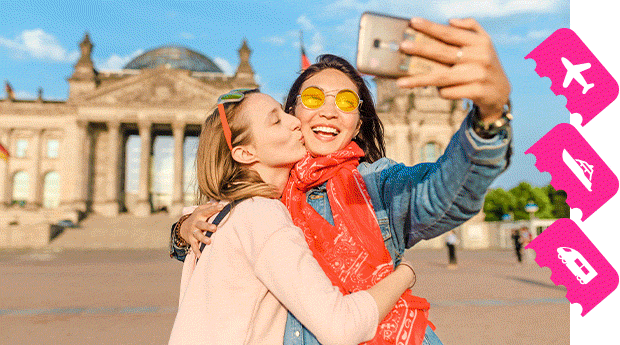It’s surprising how many Spanish words you hear in Mexico City that refer to lesbians.
There are common ones like lesbica, lesbi, lencha or levis (like the jeans!). Lenchitudes is for lesbian friend groups or communities. Bicicleta and bicolor are used for our bisexual sisters. Then there are the many slang words, like “dyke” in English, that were originally used as slurs, but have now been reclaimed by the community. These include tortilla, tortillera, tijera/tijeretera, marimacha (tomboy), machorra/macha (butch) and machukis/machiquis, which is an affectionate slang for lesbians used by younger queers. Though these words have been reclaimed, they’re still reserved for friendly spaces.
With so many ways to talk about lesbians, one would hope it would be easy to find places where they gather in Ciudad de México, which is often shortened to CDMX. In a city with an estimated metropolitan population of 22 million, though, experiencing lesbian life remains a bit elusive for visitors. But as my wife and I learned on a recent trip, a bit of research and planning can help surface lesbian-centric and female-forward adventure. We found some lesbians in Mexico City.
Mexico City is a surprisingly comfortable destination for lesbians, especially in tourist-heavy neighbourhoods. We visited a couple of weeks after Pride, and many businesses across the city still had their rainbow flags up. My wife and I often held hands while walking the streets, never feeling unsafe, and we regularly saw other lesbian couples as we meandered. While Roma and Condesa offer plenty of LGBTQ+-friendly spaces, they’re mainly for men, with the city’s lesbian life extending beyond these trendy neighbourhoods. Navigating these spaces often depends on whether you speak Spanish, as language can open doors to more local and grassroots spaces. Much of lesbian culture here is intertwined with activism—found at protest marches, in feminist collectives and within community gatherings that may not be as visible or accessible to tourists.
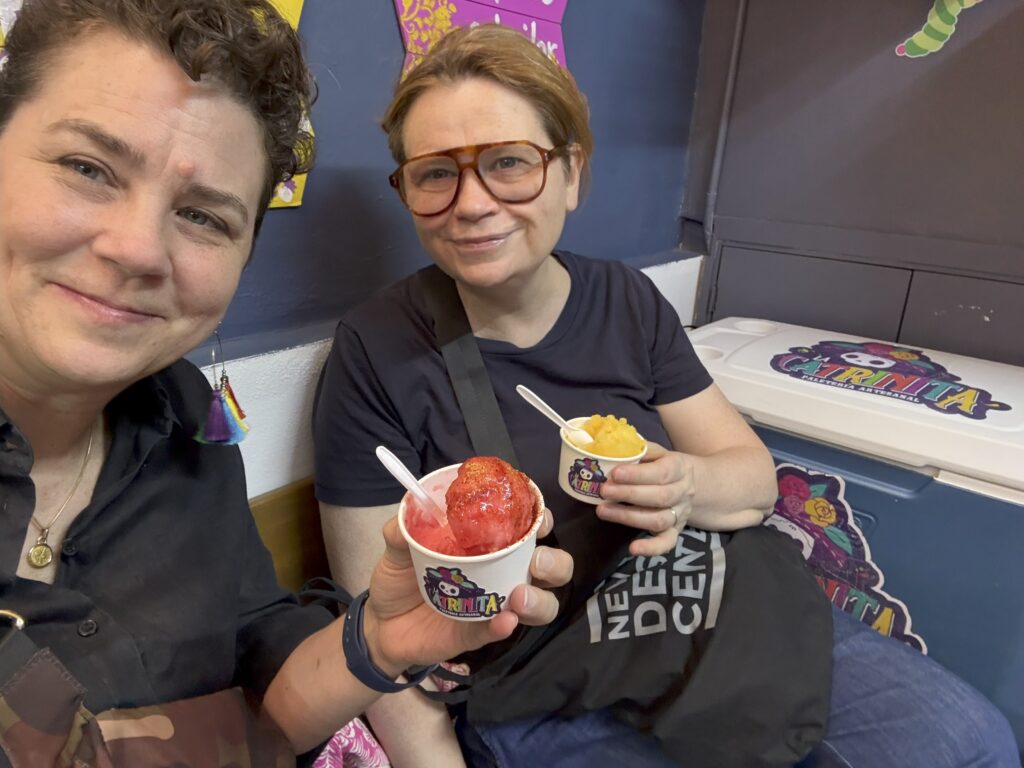
We learned about the activism and the lesbian lingo during a four-hour city tour called Mexico City for the Girls, Gays and Theys, run by Tania Villagran. This tour, for those who want a deep dive into the queer and feminist history of Mexico City, can be done as part of a group, but for the same price you can get it private if you’re at least two people, as we did. We learned about pioneering lesbian activist Nancy Cárdenas, the Muxes of Oaxaca (a recognized third gender within the Zapotec culture), the scandalous story behind the Dance of the 41 that saw a group of wealthy and politically connected gay men arrested in 1901 (a Netflix film dramatizes the event) and so much more. While there are a few queer-themed tours in Mexico City, this was the only one I found that’s led by a woman.
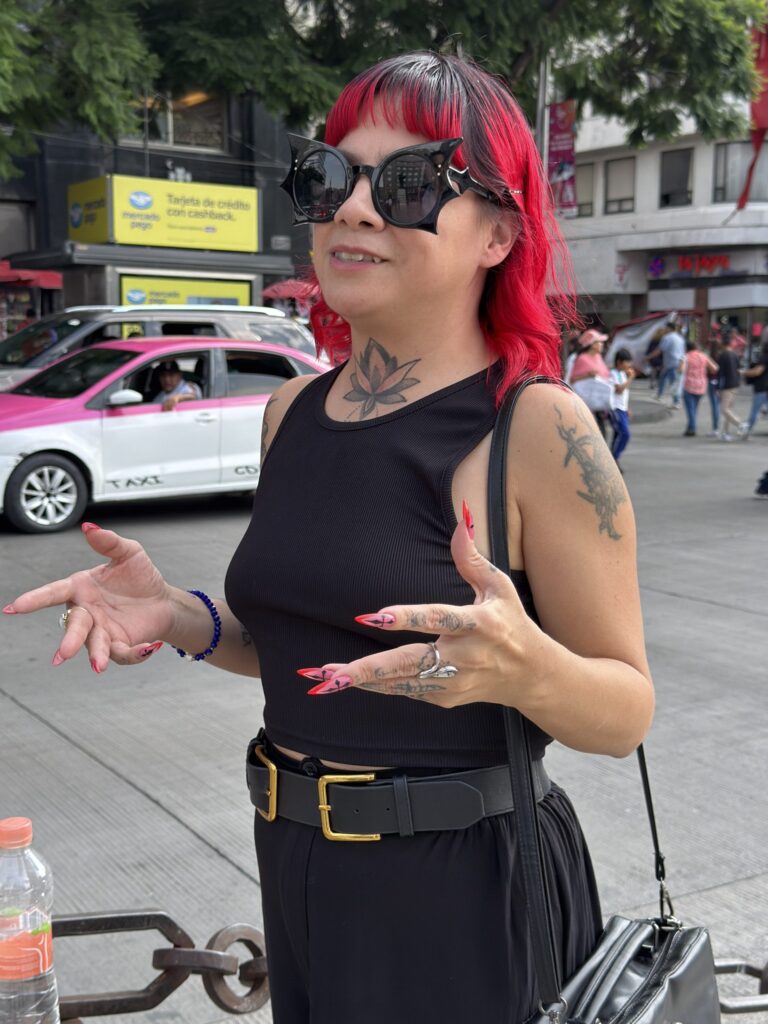
Latin America’s biggest queer bookseller, Somos Voces (Calle de Niza 23, Juárez, Cuauhtémoc, Mexico City), is another place to get the latest on lesbian happenings in the city. With vibrant shelves stacked floor to ceiling, hand-painted signs and sunlight spilling onto mismatched armchairs, Somos Voces is part bookstore, part restaurant and part community centre with dozens of events a week. There’s usually somebody bilingual on staff who is willing to assist, and it’s a good place to pick up Mexico City’s Spanish-language lesbian magazine, Tomboy District, which in the summer of 2025 hosted a culture and music festival for women. Hopefully it comes back in future years.
Any trip to Mexico City with queer women in mind should include a visit to the Frida Kahlo Museum (Londres 247, Del Carmen, Coyoacán, Mexico City), also known as La Casa Azul, or the blue house, for its vivid cobalt blue exterior. While Kahlo may have been married to fellow artist Diego Rivera, it was a tortured relationship that included many dalliances by both of them. Kahlo was known to have both male and female lovers, including the lesbian Mexican singer Chavela Vargas (whose haunting music appears in several Pedro Almodóvar films), painter Georgia O’Keeffe and bisexual jazz performer Josephine Baker. Nestled in the heart of the village-like Coyoacán neighbourhood, La Casa Azul offers an intimate glimpse into the artist’s life. Vibrant rooms are filled with her artwork, personal belongings, folk art and everyday objects that reflect her life and identity, preserved much as they were during her lifetime. Visitors can book timed entry tickets online to avoid waiting hours in line to get in. And good news for Frida fans. A new museum focused on her early years and family life will be opening right next door to Casa Azul in late September 2025. Museo Casa Kahlo will be located at Casa Roja, a private residence purchased by Frida Kahlo’s parents that has been kept in the family all these years.
The Olivia Foundation (Tonalá 46, Roma Nte., Cuauhtémoc, Mexico City) is another stop for feminine fine art. Housed in a four-storey townhouse in Roma Norte, the building was designed as a light-filled space paying homage to female artists of the post-war era. Opened in early 2024, this free entry, privately owned museum is a stunner, with architecture and design as impressive as the artworks themselves. When we visited they were showing the group exhibition “Woman in a Rowboat,” featuring Anna Weyant, Tracey Emin, Simone Leigh, Sarah Lucas and others, exploring themes of memory, identity and interiority. For a bite on the way out, Fiu Fiu Flauteria (Tonalá 36, Roma Nte., Cuauhtémoc, Mexico City) is just a couple minutes away. We were drawn in by the cute servers and Pride banners across the front of the restaurant, but fell in love with the flautas. Served in a paper cup with layers of guacamole, crema and cheese on the bottom so you can dip as you go, it’s so simple, yet so deliciously brilliant.
Heading to the Museo de la Mujer (República de Bolivia 17, Col. Centro Histórico, Cuauhtémoc, Mexico City) on the outskirts of Centro Histórico, we didn’t know what to expect from this Women’s Museum. Tucked inside an elegant but musty historic building, we were the only visitors that afternoon. With no English signage, relying on Google translate, we struggled to understand the text-heavy exhibit. It felt like our visit wouldn’t last long until a guard saw our dilemma and pushed an unmarked button next to a screen and voila, English subtitled videos throughout the entire museum. With that, we followed a fascinating, chronological journey through Mexico’s history with a female-focused lens, from pre‑Hispanic civilizations to the present day. While there are only a few mentions of lesbians in the permanent collection, the Women’s Museum has hosted a number of queer/lesbian feminist exhibits over the years and is home to events for the Seminario Histórico LGBTTTI+, an annual queer history week that takes place every November.
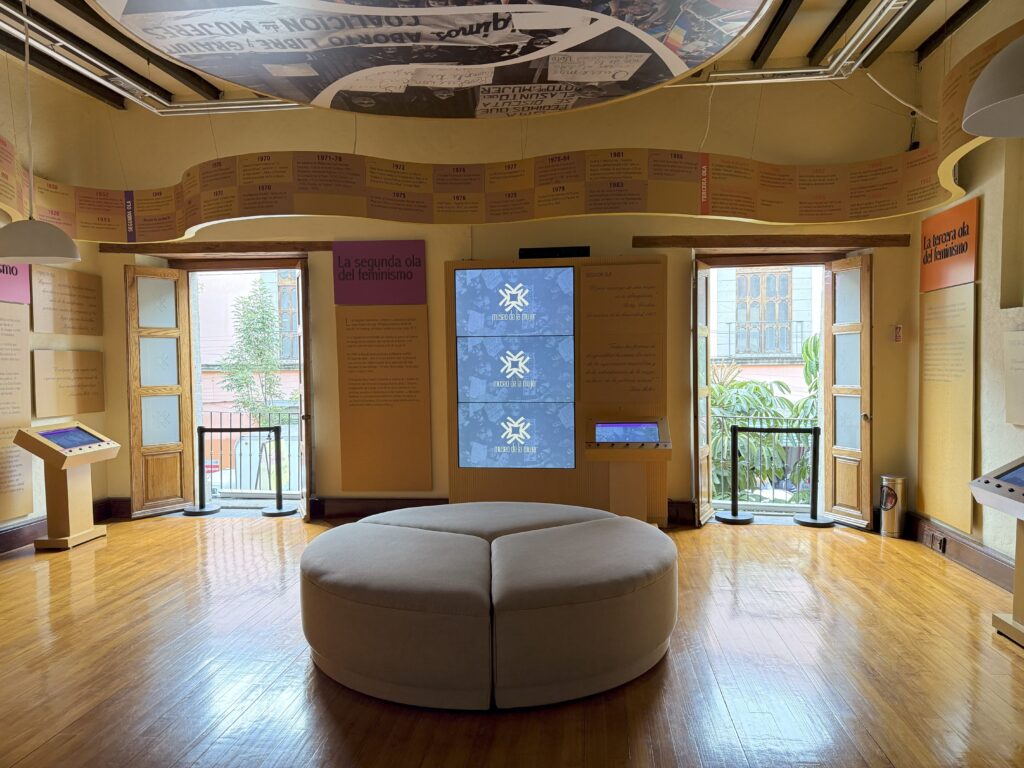
Perhaps the easiest place to find queer women is at one of the lesbian-owned cafés across the city.
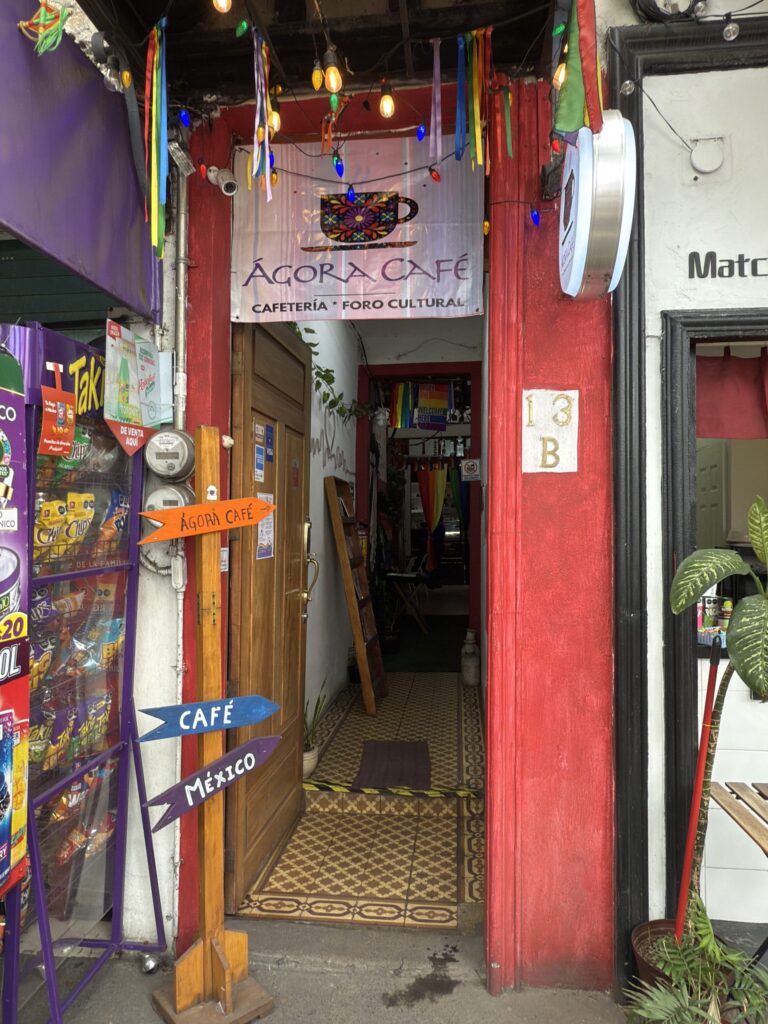
The Agora Café (Acapulco 13 B, Roma Nte., Cuauhtémoc, Mexico City) is the only place that markets itself as by and for the community. Tucked into a quiet corner of Roma Norte, it feels like a colourful laid-back living room layered with bookshelves, mismatched furniture, Pride tchotchkes, disco balls and leafy plants. They regularly host evening and weekend events and parties, making it a bit of a community centre as well.
In the slightly more residential Navitas neighbourhood, Justina Café (Bertha 43, Nativitas, Benito Juárez, Mexico City) is run by longtime couple Alicia Vazquez and Paola Pacheco. It’s a charming neighbourhood coffee shop, but curiously is only open in the evenings, from 6 p.m. to 11 p.m. That meant we went with a caffeine-free option, lemonade, but were surprised to see lesbian couple after lesbian couple walk up to the counter for a nighttime espresso. There are Justina Café stickers for the grabbing.
Nice Day Café, owned by business and life partners Nery from Mérida and Shirley from San Francisco, has two very different locations: one just off Reforma (Río Pánuco 165, Cuauhtémoc, Mexico City), the other in Roma Norte (Puebla 277, Roma Nte., Cuauhtémoc, Mexico City). The Roma Norte outpost is a much bigger, sleek, Scandi-styled space that offers breakfast, lunch, pastries and the best coffee I tasted during my time in Mexico City. The very cool queer woman who served us happened to be visiting colleagues at the other location when we dropped by that outlet and she remembered us, even introducing us to her wife. She wisely suggested we get a crepe at that teeny spot as they’re not served at the Roma Norte location.
We didn’t really find a place in Mexico City for late afternoon/early evening drinks with other queer women; everything seems to be focused on nightclubs. But as middle-aged lesbians on vacation seeking much needed rest and relaxation, we were tucking into bed at 11 p.m., not lining up outside a club.
That said, I did ask around and this is what I learned. There’s so much partying to be found in Mexico City for lesbians!
Babiana (Londres 102, Juárez, Cuauhtémoc, Mexico City), open Thursday to Sunday, is the long-running (and only) lesbian bar in the Zona Rosa, the city’s main gaybourhood.
Otherwise, most clubbing happens at pop-ups. Bian is a very popular women’s party promoter hosting events every month or two; Zinga Productions runs two occasional parties for queer women: Cantina Lencha and Sonidero Lencho. Other options include Minna Club, Fiesta Rose Girls, Good Vibes, Safisma, La Patrona, Pink Pink and Lesbian Sunset. For all of these, check their Instagram page for dates, locations and even tickets. Many of these parties sell out in advance.
Knowing all this, I’m thinking that on my next visit to Mexico City, I’ll take that disco nap, put on my dancing shoes and check out one of these nights for myself.
